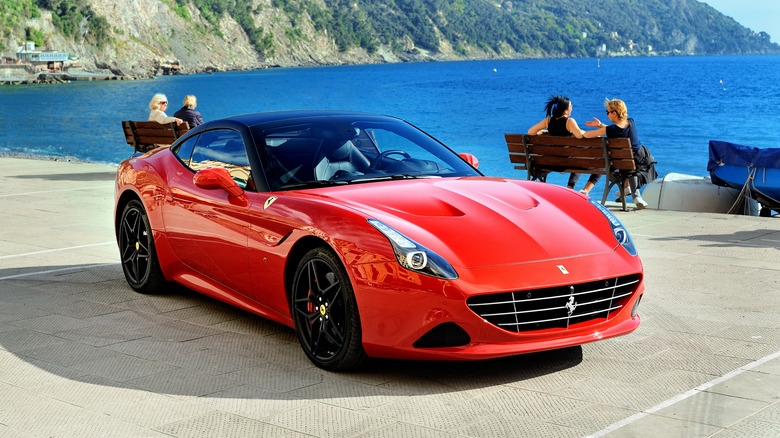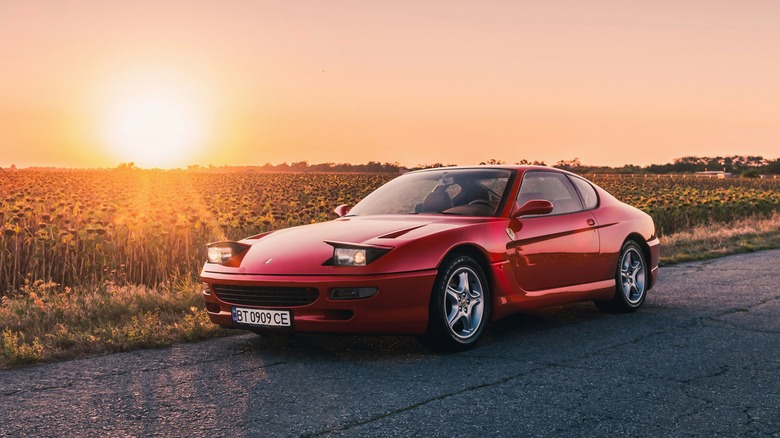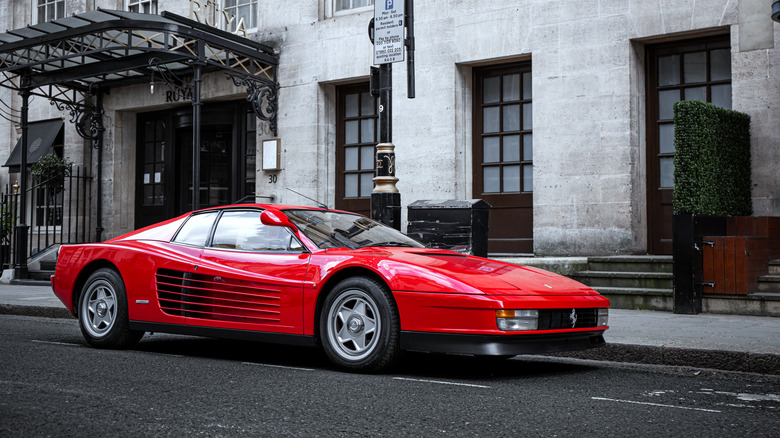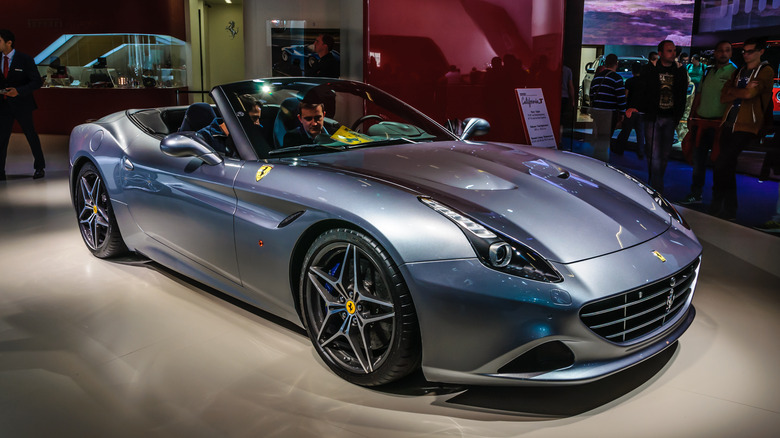5 Of The Most Underrated Ferraris Ever Made
Can any Ferrari truly be considered underrated? It is important not to get caught up in the mystique of the prancing horse badge, for the carmaker from Maranello has occasionally missed the mark.
An early 348 from 1989 is a prime candidate here, not least because of how good its successor, the F355, was. So too is the 208 GTB, a two-liter car only sold in Italy as a way for buyers to pay less tax. The curiously styled 308 GT4 has also struggled to find much love over the years, and you could say the boxy 400 and 412 four-seaters are an acquired taste. They are among several four-seat Ferraris that failed to get the heart racing in the way their smaller, sportier siblings do.
Indeed, our roundup of the most underrated Ferraris includes three more examples with seating for the whole family — the 456, FF, and California T — plus an unashamed wedge of 1970s nostalgia in the form of the Testarossa, and the F50, a supercar that stumbled at birth before eventually finding its feet and appreciating more recently.
Ferrari 456
Launched in 1992, the Ferrari 456 is a 2+2 coupe with seating for two adults up front and two smaller people in the back. Take note of the decent trunk and you could almost call it a sensible family car — only one that happens to be powered by a 5.5-liter V12 engine, and with a top speed of over 185 mph.
Said to be inspired by the 365 GTB/4 Daytona of the 1970s, the 456 is a classically good-looking car with a design that is far more subtle than today's somewhat fussier Ferraris. The 458 remained in production until 2003 and was face-lifted with the introduction of the 456M (for Modificato) in 1998, although both models share the same V12 engine with 469 horsepower. Original cars were offered with a manual transmission, with an automatic coming later.
The former is the more desirable, according to a buying guide by Autocar, but the automatic remains a good option for buyers wanting to cruise long distances in their 456.
Named, as so many Ferraris are, after its engine capacity in cubic centimeters per cylinder, the 456 has a 0-60 mph time of 5.2 seconds and a dry weight of just over 3,700 lbs. But all you really need to know is how cool it looks with those pop-up headlights. Very 90s.
Ferrari FF
Another 2+2 from Ferrari, and this time a grandchild of the 456. The FF arrived in 2011 with seating for four adults and, for when you want to hit the ski resort, a complex four-wheel-drive system. This uses two gearboxes, with the front having just two gears (plus reverse) and sending up to 20 percent of the engine's power to the front axle. Full power is sent rearwards once the driver shifts from fourth to fifth gear.
The FF's shooting brake body was designed by Pininfarina and under the hood sits a front-mid mounted, 6.2-liter V12 engine producing 651 horsepower and accelerating the car to 62 mph in 3.7 seconds. The top speed was a claimed 208 mph. You'll get the kids to school in record time.
Reviews of the FF in the period were mixed, with AutoExpress handing out just three stars and criticizing Ferrari's first four-wheel-drive car for its high price, thirst for gas, and a steering wheel cluttered with buttons — an approach to interior ergonomics Ferrari has leaned even further into ever since.
Launching with a list price of just over $300,000, FF prices have fallen by almost two-thirds in the decade since. Bring a Trailer's sales records show the four-seater hovering consistently at the $110,000 to $130,000 region over the past three years
Ferrari Testarossa
Who wouldn't want a Ferrari best known for being featured in "Miami Vice"? How about one immortalized in the classic video game "OutRun"? The Testarossa ticks both of these boxes yet has mostly failed to appreciate like many of its prancing stablemates.
We say 'mostly' because the later 512 TR has climbed in value in recent years, while the older, standard Testarossa only moved beyond the six-figure barrier in the last couple of years, according to data from Classic.com. Even by late-2022, it was still possible to buy a relatively high mileage example for a fraction under $100,000. For a supercar as unapologetically 70s as a Testarossa — wide shoulders and slatted door strakes included — that feels like great value. The market is starting to notice, with average sales since the start of 2023 passing $175,000, according to Classic.com, compared to $130,000 over the past five years.
Launched in 1984, the Testarossa was considered by Ferrari as an heir to the 512 BBi, with a Pininfarina-penned design that the carmaker says "broke somewhat with tradition and was striking and innovative."
This is also a car with a great name, harkening back to the 250 Testa Rossa (redhead in Italian) race car of 1957, so named because of its engine valve covers painted in Ferrari's signature color.
Ferrari California
Originally intended to be a Maserati, the California wasn't heaped with praise when it arrived in 2008, and even after the turbocharged California T facelift (pictured) landed in 2014, it wasn't Ferrari's favorite child. Never one to bite his tongue, the late Ferrari boss Sergio Marchionne said the 2+2 convertible "has a hard time seeing itself as a full-blown Ferrari," reported Autocar in 2017.
But, while it lacks the scalpel-like sharpness of other models, the California and California T can be thanked for bringing new customers to the Ferrari brand. We're talking about drivers who wanted to upgrade from an Aston Martin, Bentley, or Mercedes; they want an exotic Italian in their garage but need a car that is comfortable and practical enough to use every day. That's what the California is, while still producing 552 horsepower and hitting 62 mph in 3.6 seconds in turbocharged form. Secondhand prices have held steady for the past several years, at around $80,000 to $160,000 depending on mileage, age, and specification, according to Classic.com.
Manual versions, of which just two exist, command a far greater value. One sold at auction back in 2016 for $435,000.
Ferrari F50
The Ferarri F50 is an example of how a Ferrari can eventually shrug off the 'underrated' name tag. When it arrived in 1995 to celebrate the company's 50th anniversary, it did so with claims of being closely related to Ferrari's Formula One car. Its 4.7-liter V12 is a load-bearing part of the chassis, with the rear suspension bolted directly to it and creating a ride that was as much about hearing the engine as feeling it.
The F50 had a top speed of 202 mph and a 0-62 mph time of 3.9 seconds. Unfortunately, while both impressive, these performance figures made the new flagship only fractionally quicker than its F40 predecessor, which arrived six years earlier with a 201 mph top speed and a 0-62 mph time of 4.1 seconds.
The lack of performance gain on the F40 was compounded by looks that were considered challenging at the time and, as Evo magazine recalls, a feeling among enthusiasts that the removable roof suggested the F50 was a car to be seen in rather than to drive.
Production of 349 examples ended in 1997 and for a decade prices sat below the $475,000 level they started at, before recovering and eventually crossing the seven-figure threshold at the end of the 2010s. Since then, the once-underrated F50 has gotten into its stride, and auction prices have soared to over $5m. An example with just 625 miles on the clock sold in December for $5,395,000.





